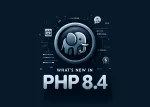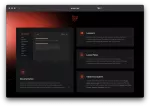
Laravel Nova In-Depth Tutorial

What is Laravel Nova?
Laravel Nova is an administration panel designed to make the process of building administrative dashboards easier. It provides a modern, powerful, and intuitive interface for managing your Laravel applications. It's a great tool for developers who need to quickly build a robust and effective administrative dashboard for their projects.
Laravel Nova is built on top of the popular Laravel framework, making it easy to use for developers familiar with the framework. It provides an elegant and modern UI that is easy to navigate, with all the necessary tools for creating a successful administrative dashboard.
One of the best features of Laravel Nova is its ability to quickly create complex, powerful, and powerful admin dashboards. It provides a variety of features that make it easy to create custom dashboards, such as custom fields, filters, and relationships. It also allows developers to quickly create forms and views for the data they are working with.
Another great feature of Laravel Nova is its integration with the popular Laravel Forge. This allows developers to easily deploy and manage their applications on Forge’s cloud hosting platform, providing an easy way to manage their applications in the cloud.
Finally, Laravel Nova provides an easy way to extend and customize the dashboard. Developers can create custom views, fields, and relationships, allowing them to customize their dashboard for their specific needs.
To illustrate how to use Laravel Nova to create a custom admin dashboard, let’s consider an example. Let’s say we have a project that requires us to manage user accounts. We can use Laravel Nova to quickly create a dashboard that allows us to easily manage user accounts and view the data associated with each account.
We can start by creating a custom view, which will allow us to view all the user accounts. We can then add custom fields, such as name, email, and address, to the view, and add filters to filter the data. We can then create relationships between the user accounts, such as a user’s friends, or a user’s posts.
Finally, we can customize the dashboard to our specific needs. We can add a navigation menu, which allows us to quickly navigate to different views, or create custom forms for users to fill out.
By using Laravel Nova, developers can quickly create powerful admin dashboards that are easy to navigate and provide all the necessary tools for managing their applications. It’s a great tool for developers who need to quickly build a robust and effective administrative dashboard for their projects.
Getting Started with Laravel Nova
Requirements
In order to use Laravel Nova, you must have a Laravel application installed and running. This requires the Laravel framework to be installed and configured on your server. Additionally, you must have access to a database such as MySQL, SQLite, or PostgreSQL. Finally, you must have a valid Nova license.
Once you have the necessary requirements in place, you can install the Nova package into your application. This is done by running the composer command “composer require laravel/nova” in the terminal. Once the package is installed, you can run the Nova command “nova:install” and provide your application credentials. This will install the necessary files and assets to get your application up and running with Nova.
Once your application is configured and running with Nova, you can begin creating your custom resources. Resources are essentially models that are used to store and manage data in your application. For example, if you have a blog, you can create a Post model and use it to manage the blog posts. You can also create custom fields and relationships between resources, allowing you to easily manage the data in your application.
In addition to managing resources and data, you can also use Nova to manage user accounts and permissions. This makes it easy to manage who can access which parts of your application, as well as what actions they can perform.
As an example, let’s say you have a blog application. You can create a Post model, which will allow you to manage blog posts in your application. You can then create a User model, which will allow you to manage user accounts. You can then create a Permission model, which will allow you to manage user permissions. Finally, you can create a Role model, which will allow you to manage user roles.
Using these models, you can now create a user interface that allows you to manage the data in your application. You can create forms to create and edit blog posts, manage user accounts and permissions, and manage user roles. With Nova, you can easily build an intuitive and visually pleasing administration panel for your application.
Installation
Laravel Nova is an admin panel package for Laravel applications. It provides an easy-to-use interface for managing your application and its resources. With it, you can quickly create custom dashboards, manage database tables, and perform complex operations on your data. In this article, we’ll discuss how to install Laravel Nova on your application and provide an example of how to use it.
The first step in installing Laravel Nova is to install the Nova package itself. To do this, you'll need to run the following command in your terminal:
composer require laravel/novaNext, you'll need to publish the Nova resources by running the following command:
php artisan nova:publishOnce the Nova resources have been published, you'll need to migrate the Nova database tables by running the following command:
php artisan migrateFinally, you'll need to install the Nova service provider by adding the following line to the 'providers' array in your app.php file:
Laravel\Nova\NovaServiceProvider::classNow that Laravel Nova is installed, you can start using it to manage your application. For example, you can create custom dashboards to view data from your database tables, or you can create complex operations to manipulate your data.
To get started, you can navigate to the Nova dashboard by visiting the /nova route of your application. From there, you can start creating custom dashboards and managing database tables. You can also use the Nova CLI to generate custom resources, such as models, controllers, and migrations.
In conclusion, Laravel Nova is a powerful tool for managing your application and its resources. With it, you can quickly create custom dashboards, manage database tables, and perform complex operations on your data. To install Laravel Nova, you'll need to run a few commands and add the Nova service provider to your app.php file. Once installed, you can start using it to manage your application.
Configuration
First, you'll need to install Laravel Nova in your application. To do this, you can use the Composer command line tool. After you've installed the package, you'll need to register the Nova service provider in your application's config/app.php file. You'll also need to publish the Nova configuration file with the Artisan CLI command.
Once you've installed and configured Nova, you'll need to create a Nova Resource class. This class will act as the model for your application's data records. It will contain properties for each field in your application's database and methods for validating, saving, and deleting data records. You can also define relationships between data records in your Nova Resource class.
You'll also need to register your Nova Resource class with Nova. This is done by creating a NovaServiceProviderclass in your application's app/Providers directory. In this class, you'll define which Nova Resource classes should be registered with Nova.
Finally, you'll need to create a Nova dashboard. This dashboard will provide you with a visual representation of your data records and will allow you to quickly and easily manage your application's data.
To demonstrate how to use Laravel Nova, let's create a simple application that allows us to manage a list of books. We'll create a Nova Resource class called Book that contains properties for the book's title, author, and ISBN. We'll also create a NovaServiceProvider class that registers the Book Nova Resource class with Nova.
Finally, we'll create a Nova dashboard that allows us to quickly and easily view, create, update, and delete books. The dashboard will contain a list of books, a form for adding new books, and a form for editing existing books.
By following these steps, you should have a working configuration for Laravel Nova in your application. With this configuration, you'll have a powerful and easy to use interface for managing your application's data.
Building with Laravel Nova
Creating Resources
In this article, we will look at how to create resources in Laravel Nova. We’ll also use an example to illustrate the process.
First, we need to create a new Nova resource. To do this, we use the Nova: Resource command. This command takes two parameters: the name of the resource and the model that it will use. For example, if we wanted to create a resource to manage posts in our application, we would use the following command:
php artisan nova:resource Post App\\PostThis will create a new Post.php file in the app/Nova folder. This file contains the configuration for our new resource. We can customize this configuration to suit our needs.
For example, we may want to add a list of fields to our resource. To do this, we can use the fields() method. This method accepts an array of fields, each of which can be configured with attributes like name, type, and validation rules.
For our example, let's add a title, body, and author fields to our Post resource. We can do this by adding the following code to the Post.php file:
public function fields()
{
return [
Text::make('Title'),
Textarea::make('Body'),
BelongsTo::make('Author')->nullable(),
];
}Next, we need to define the relationships between our Post resource and other resources in our application. For example, if a Post belongs to an Author, we can define the relationship in the Post.php file using the belongsTo()method:
public function belongsTo()
{
return [
'author' => Author::class
];
}Finally, we can define the actions that can be performed on our Post resource. For example, if we wanted to add an action to delete all posts, we could use the actions() method:
public function actions()
{
return [
(new DeleteAllPostsAction)
];
}That’s all there is to creating resources in Laravel Nova. We can use the same process to create any number of resources in our application.
We hope this article has given you a good overview of how to create resources in Laravel Nova. If you have any questions or need additional help, please don’t hesitate to contact us.
Building Actions and Tools
One of the most important features of Laravel Nova is its ability to create custom actions and tools. Actions allow users to automate their workflows and make repetitive tasks easier. Tools help users to customize the way their data is managed, providing additional functionality such as filtering, sorting, and searching.
Creating Actions and Tools in Laravel Nova is easy. All you need to do is create a resource class and then create a custom action or tool. For example, let's say you want to create an action to delete records from a database. All you need to do is create a resource class and then create a custom action. Creating Actions and Tools in Laravel Nova is easy. All you need to do is create a resource class and then create a custom action or tool. For example, let's say you want to create an action to delete records from a database. All you need to do is create a resource class and then create a custom action.
First, you need to create a resource class. This class will contain all the logic needed to perform the action. You can use a regular class or create a special resource class, depending on your needs. In the resource class, you need to define the action that you want to perform. For example, in the case of deleting records, you can define a method to delete the records.
Once you have defined the action in the resource class, you can create the action itself. This is done by creating a custom action class. This class will contain all the logic to execute the action, such as validating the data, executing the query, and sending the response.
Finally, you can create a tool to help you manage the data. This can be done by creating a tool class that contains all the logic needed to filter, sort, and search the data. The tool class can also be used to create custom forms to allow users to input their data.
In conclusion, building Actions and Tools in Laravel Nova is easy. All you need to do is create a resource class and then create the action or tool class. This allows you to create powerful admin panels that can automate workflows and provide additional functionality to make managing data easier.
Integrating with Third-Party Services
Integrating with third-party services in Laravel Nova is a great way to extend the functionality of your application. By integrating with popular services such as AWS, Stripe, and Twilio, you can make your application more powerful and useful to your users. In this article, we will look at how to integrate with a third-party service in Laravel Nova, using an example of integrating with the Stripe payment gateway.
First, you will need to install the Nova Stripe package, which is available on Github. This package will allow you to integrate with Stripe, and provides a simple API for doing so. Once you have installed the package, you can then configure it in your Nova.json file. This will tell Nova what API keys and other credentials it needs to access the Stripe API.
Next, you will need to create a Nova resource to handle the Stripe integration. This resource will be responsible for handling all Stripe API calls and will act as the entry point for your application to access the Stripe API. In the resource, you will need to create a Stripe API client and configure the API keys and other credentials. Once you have done this, you can then create a method to handle Stripe API calls.
Finally, you can then create a Nova view to display the Stripe integration. This view will allow users to view the Stripe transactions and make payments. You can also create a form to allow users to add their payment information. Once the user has input the payment information, you can then call the Stripe API to process the payment.
Integrating with third-party services in Laravel Nova can be a great way to make your application more powerful and useful for your users. By integrating with popular services such as Stripe, you can make it easier for your users to make payments and access other features. Hopefully, this article has given you a better understanding of how to integrate with third-party services in Laravel Nova.
Benefits of Using Laravel Nova
Easy Customization
One of the features that makes Laravel Nova so powerful is its ability to be easily customized. The Nova framework makes it easy to add custom fields, create custom actions, and even extend the user interface. In this article, we'll walk through an example of customizing a Nova application.
First, let's create a Nova resource. We'll use the command line to generate a new resource using the make:resource command. We'll give it the name "Employee" and add a few fields such as name, email, and phone number.
Next, let's create a custom field. Custom fields allow us to extend the user interface and add additional fields to our models. We'll create a custom field for the employee's address by creating a new class and extending the NovaField class. This class will define the type of field (text, select, etc.), the label, and the validation rules.
Finally, let's add a custom action. Actions allow users to perform certain tasks on an employee model, such as send an email or delete an employee. To add a custom action, we'll create a new class and extend the NovaAction class. This class will define the name of the action, the description, and the action handler which will contain the logic of the action.
By following these steps, we've successfully customized our Laravel Nova application. We've added a custom field, created a custom action, and extended the user interface. With the help of Nova, developers can quickly customize their applications and create powerful user experiences.
Powerful Filtering
The Laravel Nova filtering feature enables developers to quickly and easily filter through large amounts of data. Using the filtering feature, developers can search for specific data points and filter results by various criteria. For example, developers can filter through a list of customers by their country, age, email address, and more.
The filtering feature allows developers to quickly and easily search data by any criteria they choose. This can be done in a number of ways, including by entering a keyword, selecting a value from a drop-down list, or using a combination of criteria.
The filter feature can also be used to create custom filters. This allows developers to create filters that are tailored to their specific requirements. For example, they could create a filter to find customers who have made a purchase in the past month, or who have not made a purchase in the past six months.
The filtering feature can also be used to create complex queries. This means developers can combine multiple criteria to create more specific filters. For example, developers could combine age and country criteria to find all customers between 18-25 who are from the United States.
Laravel Nova’s powerful filtering feature is an invaluable tool for developers who need to quickly and easily search and filter large amounts of data. With this feature, developers can easily find the data they are looking for, or create custom filters to help them find what they need.
Extensive Documentation
The documentation is organized into sections that cover different topics. For example, the Core Concepts section covers topics such as routing, authentication, authorization, and more. The Components section provides information about all of the components included in the framework. The Tutorials section provides step-by-step walkthroughs for common tasks.
The documentation also provides information about how to extend the framework with custom components and packages. For example, developers can create their own custom Nova packages to add additional features and functionality. The documentation includes detailed instructions on how to create and install custom packages.
Finally, the documentation provides information about how to debug issues with the framework. It includes a section dedicated to troubleshooting, along with detailed information about the most common issues and how to resolve them.
To illustrate the value of the Laravel Nova documentation, consider an example. Say a developer is trying to create a blog application using Laravel Nova. They can read through the documentation to get an overview of the framework, and then dive into the specific sections that cover topics like routing, authentication, and authorization. They can also read through the tutorials section to learn how to create the blog application. Finally, they can read through the troubleshooting section to find out how to debug any issues that may arise during development.
Overall, the Laravel Nova documentation provides developers with an easy-to-follow guide to creating amazing applications. With its detailed information, examples, and tutorials, developers can quickly learn the framework and start creating applications.
Final Thoughts on Laravel Nova
Laravel Nova is a powerful and easy-to-use admin panel for Laravel applications. It provides an intuitive and user-friendly interface, allowing developers to quickly and easily manage their data. Nova has been a great addition to the Laravel ecosystem, making it much easier to create powerful admin backends.
Nova has a wide range of features, such as filters, actions, custom fields, and more. Developers can customize the interface to their exact needs, allowing for a great deal of flexibility. It also integrates well with the rest of the Laravel framework, making it a great choice for developers who are already familiar with the framework.
Overall, Laravel Nova has been a great addition to the Laravel ecosystem, providing developers with an easy-to-use and powerful admin panel. It has a lot of features that make it easy to customize and manage data, and integrates well with the rest of the framework. For those looking for a powerful admin panel for their Laravel application, Nova is an excellent choice.

August 28, 2025
Google issues emergency warning for all Gmail users

August 21, 2025
What’s New in Laravel 12 – Latest Features and Updates

May 19, 2024
A Look at What's Coming to PHP 8.4

March 14, 2024
Laravel 11 Now Available

February 4, 2024
Laravel 11: New Features and Updates

November 20, 2023